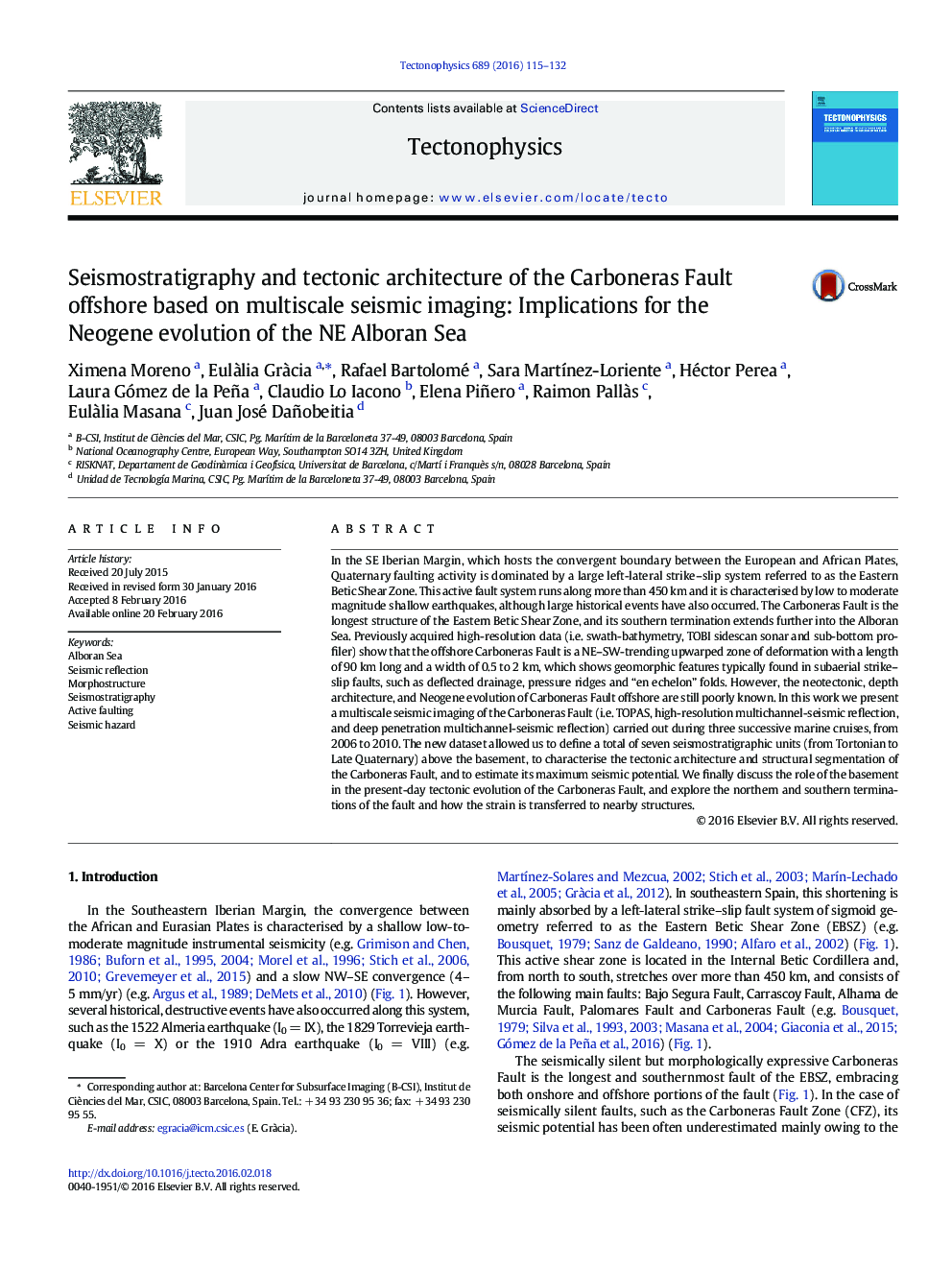| کد مقاله | کد نشریه | سال انتشار | مقاله انگلیسی | نسخه تمام متن |
|---|---|---|---|---|
| 6433329 | 1636709 | 2016 | 18 صفحه PDF | دانلود رایگان |

- New multiscale seismic data of the Carboneras Fault Zone (CFZ).
- The tectonic architecture and depth geometry of the Carboneras Fault is examined.
- We characterise fault segments and sub-segments to estimate their seismic potential.
- The basement plays a key role in the actual configuration of the fault.
- We explore CFZ terminations to know how strain is transferred to nearby structures.
In the SE Iberian Margin, which hosts the convergent boundary between the European and African Plates, Quaternary faulting activity is dominated by a large left-lateral strike-slip system referred to as the Eastern Betic Shear Zone. This active fault system runs along more than 450Â km and it is characterised by low to moderate magnitude shallow earthquakes, although large historical events have also occurred. The Carboneras Fault is the longest structure of the Eastern Betic Shear Zone, and its southern termination extends further into the Alboran Sea. Previously acquired high-resolution data (i.e. swath-bathymetry, TOBI sidescan sonar and sub-bottom profiler) show that the offshore Carboneras Fault is a NE-SW-trending upwarped zone of deformation with a length of 90Â km long and a width of 0.5 to 2Â km, which shows geomorphic features typically found in subaerial strike-slip faults, such as deflected drainage, pressure ridges and “en echelon” folds. However, the neotectonic, depth architecture, and Neogene evolution of Carboneras Fault offshore are still poorly known. In this work we present a multiscale seismic imaging of the Carboneras Fault (i.e. TOPAS, high-resolution multichannel-seismic reflection, and deep penetration multichannel-seismic reflection) carried out during three successive marine cruises, from 2006 to 2010. The new dataset allowed us to define a total of seven seismostratigraphic units (from Tortonian to Late Quaternary) above the basement, to characterise the tectonic architecture and structural segmentation of the Carboneras Fault, and to estimate its maximum seismic potential. We finally discuss the role of the basement in the present-day tectonic evolution of the Carboneras Fault, and explore the northern and southern terminations of the fault and how the strain is transferred to nearby structures.
Journal: Tectonophysics - Volume 689, 15 October 2016, Pages 115-132